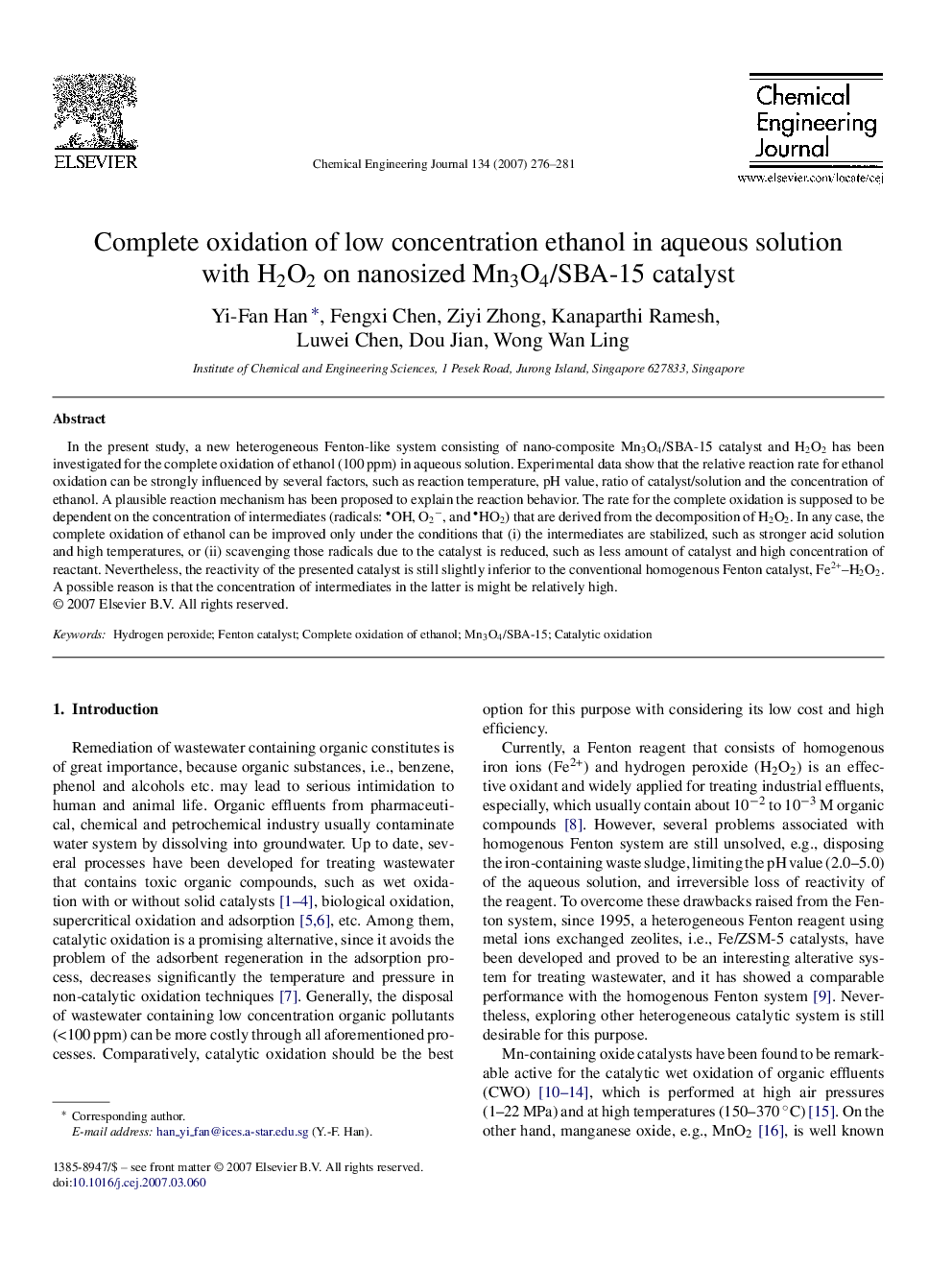| Article ID | Journal | Published Year | Pages | File Type |
|---|---|---|---|---|
| 153877 | Chemical Engineering Journal | 2007 | 6 Pages |
In the present study, a new heterogeneous Fenton-like system consisting of nano-composite Mn3O4/SBA-15 catalyst and H2O2 has been investigated for the complete oxidation of ethanol (100 ppm) in aqueous solution. Experimental data show that the relative reaction rate for ethanol oxidation can be strongly influenced by several factors, such as reaction temperature, pH value, ratio of catalyst/solution and the concentration of ethanol. A plausible reaction mechanism has been proposed to explain the reaction behavior. The rate for the complete oxidation is supposed to be dependent on the concentration of intermediates (radicals: OH, O2−, and HO2) that are derived from the decomposition of H2O2. In any case, the complete oxidation of ethanol can be improved only under the conditions that (i) the intermediates are stabilized, such as stronger acid solution and high temperatures, or (ii) scavenging those radicals due to the catalyst is reduced, such as less amount of catalyst and high concentration of reactant. Nevertheless, the reactivity of the presented catalyst is still slightly inferior to the conventional homogenous Fenton catalyst, Fe2+–H2O2. A possible reason is that the concentration of intermediates in the latter is might be relatively high.
